#herbal magic
Text
Herbalism book reccomendations 📚🌿
General herbalism:
The Herbal Medicine-Maker's Handbook by Green J. (2011)
20,000 Secrets of Tea: The Most Effective Ways to Benefit from Nature's Healing Herbs by Zak V. (1999)
The Modern Herbal Dispensatory: A Medicine-Making Guid by Easly T. (2016)
A-Z Guide to Drug-Herb-Vitamin Interactions by Gaby A.R.
American Herbal Products Association's Botanical Safety Handbook (2013)
Medical Herbalism: The Science and Practice of Herbal Medicine by Hoffman D. (2003)
Herbal Medicine for Beginners: Your Guide to Healing Common Ailments with 35 Medicinal Herbs by Swift K & Midura R (2018)
Today's Herbal Health: The Essential Reference Guide by Tenney L. (1983)
Today's Herbal Health for Women: The Modern Woman's Natural Health Guide by Tenney L (1996)
Today's Herbal Health for Children: A Comprehensive Guide to Understanding Nutrition and Herbal Medicine for Children by Tenney L. (1996)
For my black folks!!!
African Medicine: A Complete Guide to Yoruba Healing Science and African Herbal Remedies by Sawandi T.M. (2017)
Handbook of African Medicinal Plants by Iwu M.M. (1993)
Working The Roots: Over 400 Years of Traditional African American Healing by Lee M.E. (2017)
Hoodoo Medicine: Gullah Herbal Remedies by Mitchell F. (2011)
African American Slave Medicine: Herbal and non-Herbal Treatments by Covey H.C. (2008)
The Art & Practice of Spiritual Herbalism: Transform, Heal, and Remember with the Power of Plants and Ancestral Medicine by Rose K.M. (2022)
Indigenous authors & perspectives!!
Braiding Sweetgrass: Indigenous Wisdom, Scientific Knowledge and the Teachings of Plants by Kimmerer R.W. (2015)
Gathering moss by Kimmerer R.W. (2003)
The Plants Have So Much To Give All We Have To Do Is Ask by Siisip Geniusz M. (2005)
Our Knowledge Is Not Primitive: Decolonizing Botanical Anishinaabe Teachings by Djinn Geniusz W. (2009)
Ancient Pathways, Ancestral Knowledge: ethnobotany and ecological wisdom of indigenous peoples of northwestern North America by Turner N. (2014)
A Taste of Heritage: Crow Indian Recipes and Herbal Medicines by Hogan Snell A. (2006)
Medicines to Help Us by Belcourt C. (2007)
After the First Full Moon in April: A Sourcebook of Herbal Medicine from a California Indian Elder by Grant Peters J. (2010)
Latin american herbalism works!!
Earth Medicines: Ancestral Wisdom, Healing Recipes, and Wellness Rituals from a Curandera by Cocotzin Ruiz F. (2021)
Hierbas y plantas curativas by Chiti J.F. (2015)
Del cuerpo a las raíces by San Martín P.P., Cheuquelaf I. & Cerpa C. (2011)
Manual introductorio a la Ginecología Natural by San Martín P.P.
🌿This is what I have for now but I’ll update the post as I find and read new works, so keep coming if you wanna check for updates. Thank you for reading 🌿
#herbalism#herbal medicine#herbal health#green witch#green witchcraft#green magic#herbal magic#herbal witch#herbal witchcraft#plant medicine#plant magic#plant witch#folk healer#healing witch#healing magic#curanderismo#yerbera#curandera#rootwork#rootworker
2K notes
·
View notes
Text
here's some witch thing to do for Mabon (mah-bawn) (also know as the Autumn Equinox, or Pagan Thanksgiving) since its saturday!
• make stew to celebrate the gifts (aka crops) that the earth has given us (even better if it has squash in it)
• eat stuff with apples and squash!
• set out an offering for the wildlife
• eat pomegranate in honor (idk the right word to use there) of Persephony
• relock your mirrors, recharge your wards, cleanse stuff, ect.
• journal what you've done this year so far
• set your home up for winter
and here something bigger that I would suggest doing is taking a healing bath.
put some healing herbs in your bath and corresponding crystals and candles (the candles and crystals are optional). here's a list of herbs im going to use: dried rosemary, apple slices, bay leaves, thyme, dried rose pedals, spearmint leaves, himalayan pink salt, blackberries, and cucumber. the crystals im using: clear quartz, rose quartz, moonstone, aquamarine, and jasper. and im going to use some ocean water, too (if you have an ocean near you, you can use ocean water). and here are the candles im using and the meaning that im using that color for:
white (peace, purity, spiritual)
blue (calmness)
pink (emotional healing, self love)
green (physical healing)
yellow (comfort, joy)
also, if you want to use different herbs and crystals then me visit pinecone pub on the ✨ interwebs ✨ and click the get started button and type in 'heal' or ' healing' (of course with out the 's) in the search and a list of stuff would come up (herbs and crystals) that you can put in your healing bath.
Mabon simmer pot:
what you'll need:
• an orange
• rosemary (dried or fresh)
• an apple
• cinnamon sticks
• rose pedals (dried or fresh)
how to:
(1. cut up your orange and apple into slices.
(2. start heating up a pot of water on a stove
(3. add in your orange slices, apple, rose pedals, rosemary, and cinnamon sticks.
(4. let simmer.
and a little extra tip for this coming autumn, the stuff that makes up pumpkin spice, all of those herds can be used for protection. so if you like pumpkin spice, there's a little excuse to eat more stuff with pumpkin spice in it.
#fall#autumn#witchcraft#witchblr#witch#pagan witch#paganblr#paganism#pagan#mabon 2023#mabon#witchy#witchy tips#healing magic#healing magick#herbs#herbal#herbal magic#herbal magick#crystals#crystal magic#crystal magick#candles#candle magic#candle magick#magic#magick#pagan thanksgiving#autumn equinox#fall equinox
202 notes
·
View notes
Text
Esoteric Chaos Masterpost - Online Grimoire

Need help finding all of my personal posts on my blog? Look no further! Here is everything collected in one place for you.
If a link is not working please let me know and I'll fix it immediately. If you do not see a link and it's just text* those are upcoming posts scheduled.

Spiritual Hygiene and Beginner Work - The foundations of witchcraft and spiritual upkeep
Grounding and Centering - How-Tos and Methods
Cleansing - The How-Tos and Methods
Banishing - The How-Tos and Methods
Protection - The How-Tos and Methods
Warding - The How-Tos and Methods
Low Energy Practices - Spoonie Edition*

Basics in Witchcraft - The basics of witchcrafting
Intention
Visualization
Energy Manipulation*
Safety in Witchcraft

Spell Crafting Basics - The basics of spellcrafting
"How do I create a spell? Spell reversals?"*
"What is casting a circle? Do I need to?"*
"How do I Power my Spells?"*
"Planetary Timing? What’s that?"*
"My Spell Backfired! Help!"*
"I Think I Was Cursed. What Do I Do?"*
Wheel of the Year Masterpost - Spoonie Witch-Friendly

Intermediate/Advanced Witchcraft - Types of more advanced practice
What is Intermediate and Advanced Witchcraft?*
What is Energy Work?*
Divination*
Cursing, Hexing and Jinxing*
What is Ancestor Work? Breaking it down and how to start + extra

Types of Magic - Different categories of witchcraft
Lunar magic*
Glamour magic*
Hearth magic*
Chaos Magic*
Energy Healing 101

Kitchen Witchcraft - Infused Cooking Oils, Dinner Recipes, Baking, Tea Blends, Syrups, Etc
Kitchen Witchcraft Masterpost

Herbalism - Herbal Education, Recipes
Herbalism Masterpost

Spells - Spells, Pop Culture Spells, Sigils, Spell Oils, Spell Powders
Spells Masterpost

Spoonie Witchcraft
Low Energy Witchcraft - Chronic Fatigue Edition
Disability-Friendly Prosperity Magic

Tips and Tricks
Low Energy Cleansing Tip

Extra’s - Any extra reading material on different topics
Sustainability and Witchcraft*
Endangered and Threatened Plants and Resins*
UPDATED: 4/06/24
#Esoteric Chaos Masterpost#witchcraft masterpost#witchcraft#spoonie witch#witch#witchblr#cleansing#banishing#warding#Energy work#spells#witchcraft spells#herbal magic#kitchen magic#wheel of the year#online grimoire#grimoire
121 notes
·
View notes
Text

Handfulsofdust
#witchblr#witches of tumblr#witchcraft#wicca#pagan#witchy things#witchy#magick#green witch#baby witch#green witchcraft#witch community#candle magick#candle magic#cauldron#scrying#herb magic#herbal magick#herb magick#herbal magic#green magic#green magick
746 notes
·
View notes
Text
Healing Spell Bowl

Ingredients
[ ] pink candle
[ ] olive oil (optional)
[ ] pink salt
[ ] lavender
[ ] rose
[ ] apple(optional)
[ ] bay leaf
[ ] citrine
[ ] eucalyptus
[ ] lemon balm
[ ] lemon
[ ] sunflower
[ ] rosemary
[ ] rose quartz
[ ] clear quartz
[ ] coffee
Steps:
1. Cleanse bowl, candle, and crystals
2. Add in pink salt, visualizing fulfillment in your life. think of the salt filling the bowl as love filling the cracks in your soul
3. Add in your herbs. As you scoop each herb, make sure it knows what it's job is. Many herbs have many different properties, so be clear with your intentions. Thank each herb after it's been added, as it's doing a service for you. If using crystal chips, you can add them at this time as well
4. Stir your herbs clockwise while thinking of all the areas in your life you'd like to heal, how you intend to do that, and what you'd like to be brought into your life. Think of it as if you already have it
5. Grab your bay leaf and write a healing sigil on one side, and your name and DOB on the other. Set aside.
6. Grab your apple and carve a space to set the candle in. The apple should function as your candle holder in the bowl
7. Carve your name on one side of the candle, and "healing" on the other side
8. (Optional) Anoint your candle with a premade healing oil, or just olive oil. Dress it with rose, lavender, and rosemary.
9. Set the candle in the apple, then cup your hands around the bowl. Visualize yellow, pink, or white energy going into the bowl while also focusing on what it is you plan to accomplish.
10. Light the candle and burn the bay leaf
11. Let candle burn all the way out
12. Dispose of materials as you see fit (DO NOT PUT SALT IN THE GROUND!!)
Happy Witching!!!
#witchcraft#witch#witchblr#magick#witch tips#paganism#pagan#spellbook#witch spells#spell#spells#spellwork#healing witch#herbal#herbal magick#herbal magic
60 notes
·
View notes
Text
small list of beginner & indoor herbs for baby green witches
hiii here's a list of some of the plants i started with that newbies might need for starting their indoor garden.
lemon balm. plant or buy it in the fall and dry it out so you'll have it all year.
basil. perfect for indoors.
green onion. when you buy them from the store, place the base in a mason jar of water and change the water daily. they'll grow like crazy i promise.
mint. it's one of the best indoor plants and works best in containers anyway.
rosemary. you can buy it in pots and that shit is near impossible to kill.
thyme. super easy to grow and wonderful for magic.
#witchcraft#beginner witch#baby witch#green witch#herbs#herbal magic#green magic#gardening#spellwork#spell work#correspondences
192 notes
·
View notes
Text



:: the Stories, Myths, and Magic of Herbs zine ::
#cottage witch#cottagecore#backyard herbalism#herbalist#herbs#herbal magic#herb lore#zines#zine culture
37 notes
·
View notes
Text
seer. wise woman. witch.

This series builds on previous witch posts, including Secret, lovely seer witch and Passing the mantle. There are hints from the beginning that all three sisters are witches, but this series focuses primarily on Elain's connections to witches. All of these posts are situated in the Maasverse and have spoilers for all three series, so please proceed with caution.
-1- Lovely monster
-2- Seed of power
-3- Herbs she planted
-4- The Ancients
-5- Song of the wind
-6- The sense chanted
-7- Groundings
More theories, connections, and headcanons about the middle Archeron sister here.
#witch!elain#elain archeron#witchy elain#the archeron sisters#archeron witches#maiden mother crone#past present future#seers oracles mystics#shapeshifting#herbal magic#song of the wind#broomsticks#witch rituals and chants#witch mirrors#groundings#maasverse witches#tog witches#cc witches#acotar witches
101 notes
·
View notes
Text

She is blossoming 🌙🤍
#datura#stramonium#poison path#green witch#witchcraft#folk witch#traditional witchcraft#herbal magic#magical herbalism#herbalism
359 notes
·
View notes
Text
Greenery of the Draconic Persuasion
When you think of dragons and plants associated with them, what’s the first thing you think of? Most likely Dragon’s Blood, but what other plants out there are also associated with dragons? This is more of an overview rather than a suggestion of “use these plants”, because some of them really just… aren’t all pleasant to work with, but still have a fascinating history.
Dragon’s Blood
Still good to go over the big one we all know. Dracaena is a genus of trees that is noted for having certain members, such as Dracaena draco and Dracaena cinnabari, that bleed a red resin when cut; this resin is referred to as ‘Dragon’s Blood’. The name of this genus comes from the Greek ‘drakaina’, which is the name for a female dragon. It has also been tied to the myth of Heracles, particularly the 11th task and the dragon Ladon, by some interpretations Ladon is the dragon guarding the tree or is the tree; by others, the Dracaena springs from Ladon’s blood when slain.
Do note, however, that the majority of Dragon’s Blood resin on the market these days comes from a different genus of tree entirely, Calamus dracunculus (formerly Daemonorops draco and Calamus draco), while other genera of trees also exude a red resin that may also be referred to as Dragon’s Blood, all technically having different properties. The tree that was believed to be originally used and written about, Dracaena cinnabari of Socotra, is rated ‘vulnerable’ on its conservation status, while Dracaena draco is listed as ‘endangered’. Calamus draco meanwhile does not seem to be threatened.
This collective of red resins do have a long history of use in medicine, art, and ritual in various cultures. The most frequent magical uses of the resin are as an incense for protection or cleansing, and dissolved in alcohol as a magical ink. With how many different trees act as a source of ‘dragon’s blood’, it is good to keep in mind that different species may vary in terms of magical/energetic traits, and that the attraction to Dragon’s Blood as a magical component could be considered these days to be more based on symbolism and human-given attributes.
Tarragon
Artemisia dracunculus, or “Little Dragon of Artemis”, often referred to as just “dragon” in Swedish and Dutch and, in the past, German; a name that was given for the appearance of its coiled roots, or likening the shape of the leaves to dragon tongues. It is in the same genus as Mugwort, Wormwood, and Sagebrush, and French Tarragon is most frequently used for culinary purposes with a somewhat licorice-like flavor. It was believed, per Pliny the Elder, that Tarragon would ward away dragons and venomous serpents (unproven of course) and could cure snakebite (also unproven). There aren’t many historic magical uses otherwise, though some modern witchcraft practices have given it associations with protection, banishment, and healing. Scientifically, it has been proven effective at repelling insects and as a mosquito larvicidal, effectively combating the spread of malaria through less environmentally-hazardous means.
Snapdragon
Antirrhinum majus, also referred to as ‘toadflax’, ‘dog flower’, ‘dragon flower’. It is so named because of the flower’s appearance, which is likened to a dragon’s snout that opens and closes when squeezed laterally. They come in a wonderful range of colors and, like other dragon-associated plants, are considered to be protective: in Medieval Europe, they were believed to protect from witches and ill magic, and were planted near castle gates or hung above cribs to ward off evil spirits. They were also used as a charm against falsehood, and in flower language symbolized ‘truth-telling’. The skull-like seed pods have commonly been worn to protect from curses and other bewitchments.
Dragon Arum
Dracunculus vulgaris, also referred to as dragon lily, vampire lily, devil’s tongue, and, in its native Greece, drakondia. Like its larger cousin, the Titan arum, it is not a flower most people would be including in a nice bouquet, with respect to its fragrance being like that of rotting meat to attract flies as pollinators. Like Tarragon, not only does it share the same Latin “little dragon” name, it was also believed to ward away serpents(also also unproven), though some sources also claim that it generates serpents (flies attract other critters that snakes eat, so yeah I could see that as a conclusion). It is also one of many in the Arum family that can produce heat (thermogenesis), reaching about 65°F/18°C, which is used to lure flies to the flower for pollination. These unique physical properties can lend themselves to equally interesting potential magical associations.
Dragon Root/Green Dragon
Arisaema dracontium is a plant native to North America. All parts of the plant are highly toxic to humans when eaten raw due to the presence of Calcium oxalate. I am including it here only to show the range of dragon-associated plants and do not necessarily advocate its use. Though historically, it has in fact been used as medicine, especially as an abortifacient and to stimulate menstrual flow.
__
This is by no means an exhaustive list of plants with dragon-inspired names, as can be seen here. But for those wanting to include draconic plants in their practice but can’t afford or can’t find a place to obtain dragon’s blood, or otherwise want to avoid using it, there are comparatively more easily-obtained alternatives at your local stores, such as Tarragon, Dragonfruit, and Snapdragons, or perhaps another native species local to you. Just make sure to do your research and know if cautions must be taken, what the physical attributes are, and if a plant is endangered or not.
Resources
https://blogs.reading.ac.uk/tropical-biodiversity/2013/03/dracaenaceae-dragons-blood-and-the-language-of-the-birds/
https://en.wikipedia.org/wiki/Dragon%27s_blood
https://herbsocietyblog.wordpress.com/2023/07/03/herb-of-the-month-french-tarragon-the-little-dragon-herb/
https://dsps.lib.uiowa.edu/roots/french-tarragon/
https://www.ncbi.nlm.nih.gov/pmc/articles/PMC8076785/
https://www.gardenguides.com/126335-history-snapdragons.html
https://www.flower.style/stylewatch/discover-the-curious-origins-of-snapdragons-not-to-worry-they-dont-actually-bite
https://www.petalrepublic.com/snapdragon-flower-meaning/
https://www.gutenberg.org/cache/epub/44638/pg44638-images.html#page-153
https://en.wikipedia.org/wiki/Dracunculus_vulgaris
https://en.wikipedia.org/wiki/Arisaema_dracontium
https://ebrary.net/28107/environment/snapdragon
https://plants.ces.ncsu.edu/plants/arisaema-dracontium/
https://www.yellowwood.net/post/skunk-jacks-dragons-the-curious-arum-family
#dragon magic#dragon witch#dragon work#dragon path#herbal magic#sal writes things#sdlkfj this took even longer than I wanted because I don't know how to format on Tumblr#also writing it took forever because I kept running out of steam and finding interesting links#last writing of 2023
20 notes
·
View notes
Text
What would be the proper term for a witch who works with Animal Spirits, Nature, Herbs, Plants in general, what kind of witch would this be? Im Kemetic but have heavy emphasis on Animal Spirits (including Sacred Animals of the Netjeru) which is the main focus of my practice including Shapeshifting.
Side note: how do I find accurate reliable sources for Herbal Magic, not just Herbal remedies? I would like to find local ones for NA but have a feeling most sources would end up being Native American but am not sure. If so are there any European sources that would be open for practice?
#pagan#witch#paganism#witchcraft#hedgewitch#greenwitch#kitchenwitch#death witch#Herbs#herbal magic#magick#magic#Animal Spirits#Spirituality
21 notes
·
View notes
Text
herbs for the fall equinox: 🍂
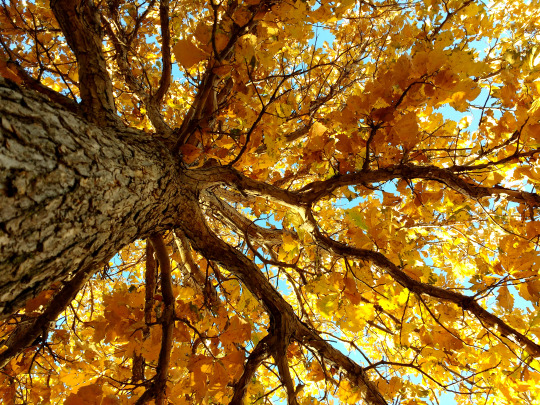
mabon is one of the eight wiccan sabbats that are observed annually, aligning with the autumnal equinox in the northern hemisphere !! this holiday celebrates the second harvest of the year, and many people use this time to thank the earth for its bountifulness
here are a few herbs you can use to celebrate mabon this year:
apples: associated with fertility, longevity, and abundance, apples are strongly tied to mabon !! try baking with them or place a few apple seeds on your altar
cedar: put a few drops of cedarwood oil into a diffuser or use cedar bark when burning spell petitions
calendula: planet this beautiful annual flower in your garden or brew the petals into a nice tea
blue sage: this herb is popularly burned for its protective properties, but you could also leave a sprig or two on your windowsill
corn: make a meal for yourself and others that includes this on the plate !! you could also feed the kernels to squirrels, deer, etc.
grapes: this is another fruit connected to wealth and fertility. hang the stems in a sachet nearby your bed to promote pregnancy, better dreams, and more income
book a reading !!
my linktree
#witchblr#witch tips#witchcraft#witch advice#witchy#witchy thoughts#witchy things#witch blog#witch stuff#witch community#spells#fall equinox#mabon#mabon sabbat#herb magick#herbal magic#herbal witchcraft#herbal witch#herbology#herbalism#chronically ill witch#disabled witch#trans witch
39 notes
·
View notes
Text




i am addicted. i got these books at barns & noble and i can say i am addicted to buying witchcraft books. i was going to get a book on runes and a book on practical magic, too... but at that point i already spent $50 (USD).... next time....
#witch community#witch#witchcraft#witchblr#paganblr#paganism#pagan witch#pagan#book#books#barns & noble#magick#herbal magick#herbal medicine#herbal#herbs#moon#moon magic#moon magick#herbal magic#earth magic#earth magick#tarot#tarot cards#tarot book#witchcraft spells#ritual#magick ritual#apothecary#sacred medicine
31 notes
·
View notes
Text
What are Infused Oils?
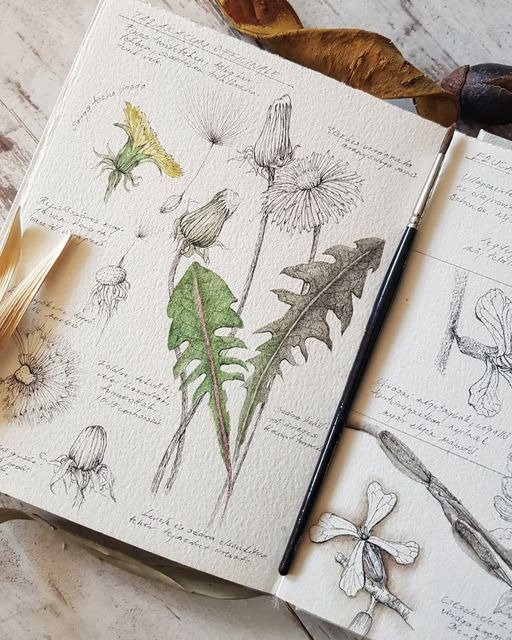
What are they?
Infused oils are herbal components or spices placed in a jar of carrier oil like Olive Oil, Grapeseed Oil, Avacado Oil, Jojoba Oil, Coconut Oil, etc. Can be used in cooking, herbal ailments and skincare.
Are they essential oils?
No. Short answer, no. Long answer? I'll give you an explanation. Essential oils are distilled using Steam Distillation, Solvent Extraction, CO2 Extraction, Maceration, Enfleurage, Cold Press Extraction, and or Water Distillation. Lotta words huh? It takes a lot of work to make essential oils. Unfortunately, it also takes quite a bit of that plant to make even those tiny 10ml bottles you purchase. Of course, each plant varies. However, it still can lead to a larger environmental impact.
For instance, one pound of essential oil can be extracted from approximately 250 pounds of rosemary leaves, or from 150 pounds of lavender buds, or say 50 pounds of eucalyptus leaves. This is why you see some as more expensive than others. Unfortunately, you can see where the problem lies in plants that are more threatened or endangered. If you must use essential oils, source responsibly (and not from a Pyramid scheme but I'm not opening that can of worms)
Can I use infused oils in my practice?
Yes! Absolutely! All these oil recipes you see for spell oils are exactly that. You can even use the elemental correspondences of the carrier oils you use for spell oils. As an example Olive Oil is traditionally known for the fire element and Coconut Oil is water. The possibilities for your personal correspondence are endless!
Now I'll stop rambling. Here are a few methods I learned to infuse oils in my courses and through self-herbalist study.
Method One:
The Folk Method - The most common
Directions
Place DRIED herbs in a clean, dry jar. Leave at least 1 to 3 inches of open space above your herbs to cover with oil.
Fill the remaining space in the jar with the oil of your choice, making sure to cover herbs by at least 1 inch or more. If the herbs emerge above the surface of the oil at any point while infusing, pour more oil on top to ensure the herbs remain covered.
Cap the jar tightly and shake well.
Place the jar in a sunny, warm windowsill and shake once or more per day.
After 2 to 3 weeks, strain the herbs out of the oil using cheesecloth or a mesh strainer. Or you can leave it in but straining is recommended if you are using dropper bottles as it clogs the caps.
Pour into clean glass bottles.
Remember to label your jars with the date, type of oil, and herbs used! You WILL forget! Trust me.
Store in a cool, dark place. The oil may keep for up to a year.
Method Two:
The Heat Infused Method - Quick Infusion
Directions
Place herbs in the crock pot or double boiler. Cover with extra virgin olive oil (or other carrier oil of choice), leaving at least an inch or two of oil above the herbs.
Gently heat the herbs over very low heat (preferably between 100° and 140° F for 1 to 5 hours, until the oil takes on the colour and scent of the herb. Some recommend heating the oil for 48 to 72 hours at a controlled temperature of 100° F. Turn off the heat and allow it to cool. I personally prefer letting it sit in a crock pot for 72 hours as I feel like I get all of the benefits out of the herb.
Once oil is cooled, strain using cheesecloth.
Bottle in dry, sterilized glass bottles. LABEL your bottles with the date and contents before storing them.
Store in a cool, dark, dry place for up to six months.
Best herbs to infuse in oil
There are a countless number of herbs, spices and resins that can be infused into the oil. Please make sure these herbs are free from pesticides and chemicals (not found on the roadside). Dried herbs work best as you don't want your mixture spoiling sooner. Here are some great examples of herbs to use.
Pine needles
Calendula flowers
Chamomile flowers
Lavender
Lemon balm
Peppermint leaf
Rosemary leaf
Thyme leaf
There you have it! Now have fun and source responsibility.
Happy witching!
Want to read more?
On sustainability and impact:
Links:
Dangers of essential oils and pets:
Link:
Want to check out my other post? Look at my Masterpost
#witchcraft#witch#infused oils#spell oils#essential oils#aromatherapy#kitchen witchcraft#herbal magic#herbalism#herbalist#herbal medicine#witchblr
21 notes
·
View notes
Text
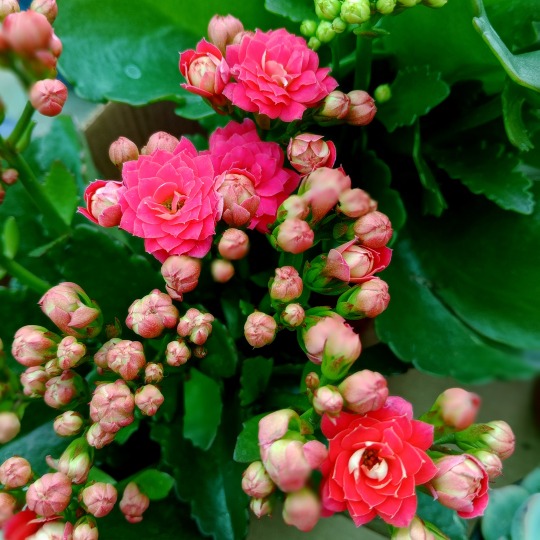
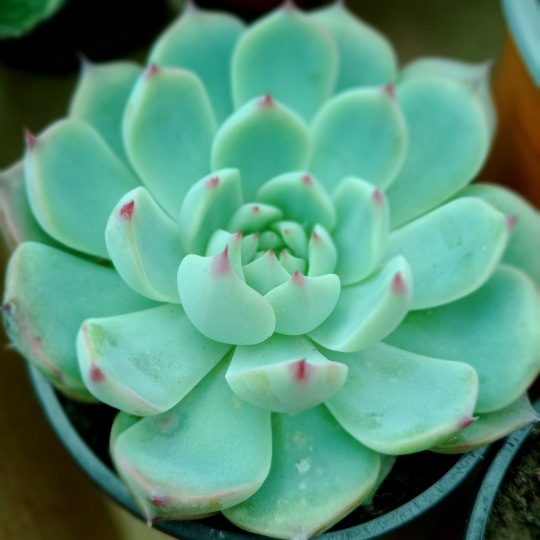
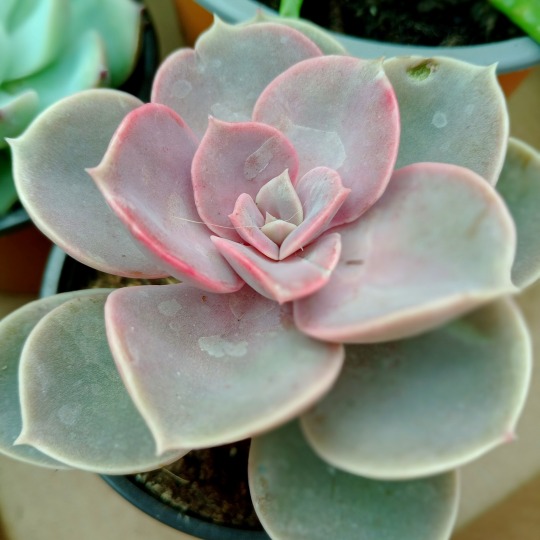


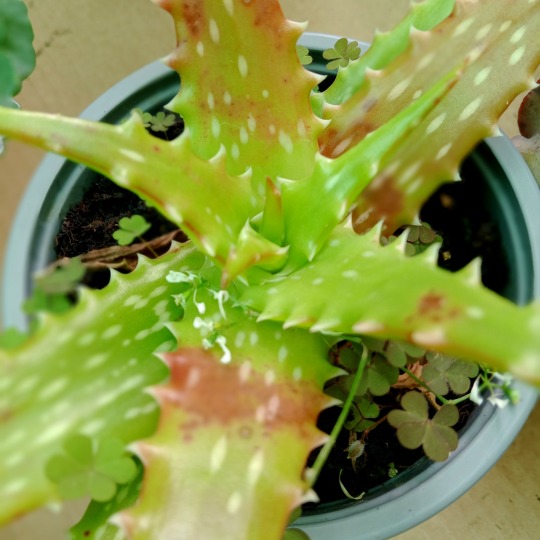
As promised, some pics of the new Aloes and other lovely succulents, for no other reason than their loveliness 🥰. If treated with care, succulents of all kinds are great attractors for abundance and prosperity; Aloes, besides that, are also excellent protection talismans - be good to them if you have them around. Happy Saturday!
#carolinagonzalez#herbalism#herbal magic#succulents#plantblr#gerdening#organic gardening#self empowerment#prosperity talisman
9 notes
·
View notes
Text
When NOT to Use Herbs in Witchcraft - Witchy Quick Tips
Herbs are a huge part of many people's craft, but you need to know when to use them and when not to. Here is a quick guide on just that!

When NOT to use herbs
This probably sounds a little strange if you're not too familiar with herbs, but stick with me here: there is a time and a place for everything, even herbs.
Here are some examples of when you shouldn't use herbs:
If Consuming:
if you or those around you are severely allergic
if the herbs in question interact with any medications that you take
if the herbs are known to interact or otherwise mess with any mental or physical disorders you may have
If Burning:
if pets, small children, or someone with a lung condition is around
if you are in an enclosed space with little to no ventilation
if you're renting, make sure it's okay to use incense or burning herbs
Other Notes:
Make sure to keep all herbs out of reach of pets or small children, herbs should only be consumed if properly prepared (like in food) or they have been given the OK by a medical professional.
If you are foraging, make sure the herb you're looking at is actually the herb you're looking for; many safe herbs have VERY harmful--even deadly--look a likes.
Never replace your prescribed medication with herbs.
Also do not use herbal supplements if you're unaware of the side effects that they could cause.
Never use herbal supplements from shady or unknown sources.
Resources:
Common Herbal-Drug Interactions
Toxic and Non-Toxic Plant List for Cats
Toxic and Non-Toxic Plant List for Cats
-Coin
#witchy quick tips#witchy tips#witchcraft for beginners#beginner witchcraft#pagan#herbal magick#herbal magic#herbal witchcraft#witchcraft 101#hedge witch#kitchen witch#learning witchcraft#grimoire
235 notes
·
View notes